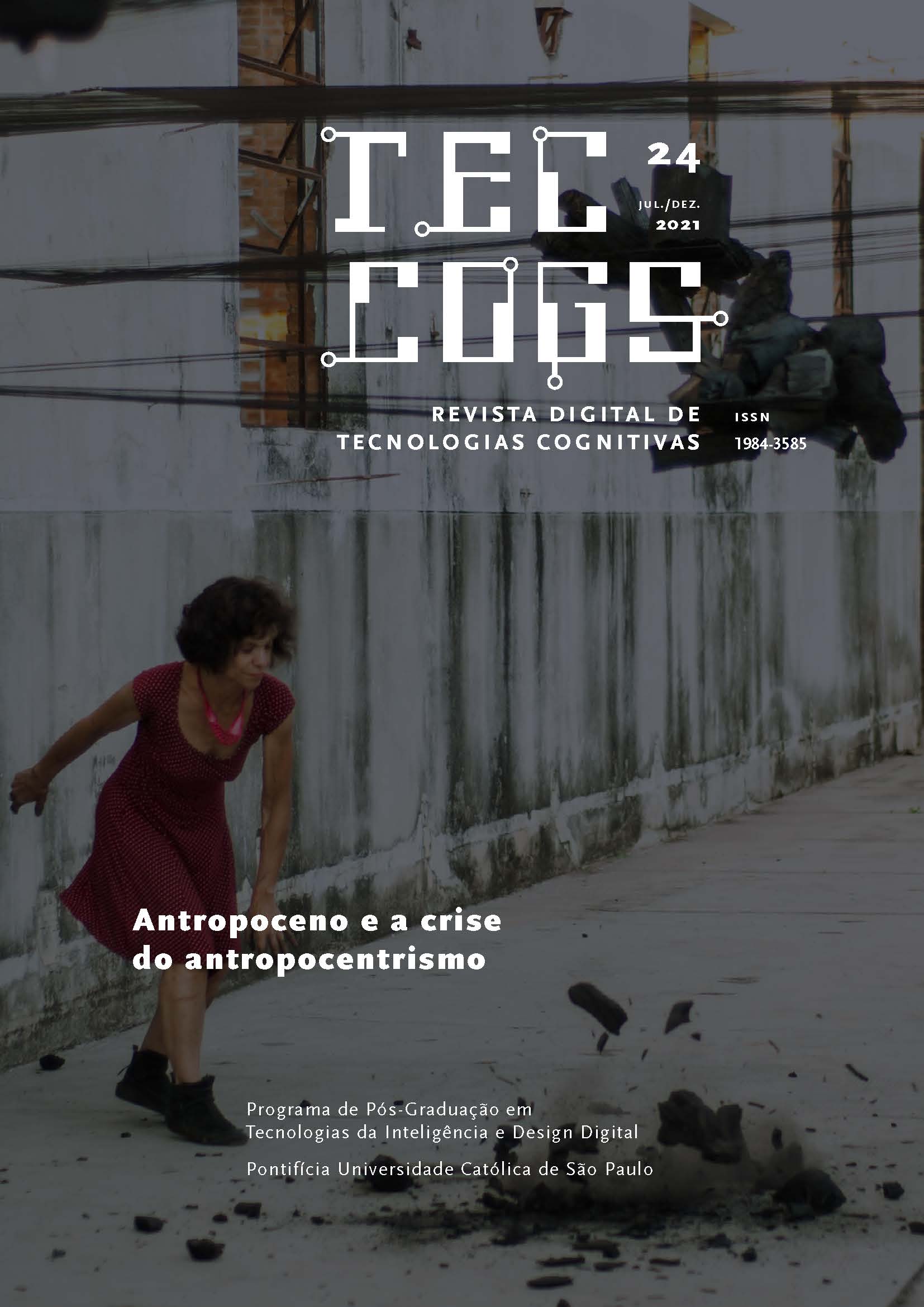Semiotics of human-robot relations
DOI:
https://doi.org/10.23925/1984-3585.2021i24p41-57Keywords:
Human-robot relationship, Gender and AI, Feminism and technology, Feminist robotsAbstract
This article is an attempt to map how feminist studies approach experiences between humans and robots in the fields of semiotics, cultural studies, and critical theory. The author delves into the theories, speculations, and accounts of observation
(where the body of the observer tends to be included) in research on artificial intelligence and cybernetic culture. The paper seeks to relate conversations, continuities, and gaps between interpretations of the relationship between humans and robots, human and posthuman, and the cracks in the codes when approaching this border region. To what extent do gender relations and otherness acquire relevance in cybercultural debates?
References
ATANASOSKI, Neda; VORA, Kalindi. Surrogate humanity: Race, robots, and the politics of technological futures. Durham, NC: Duke University Press, 2019.
BARAD, Karen. Posthumanist performativity: toward an understanding of how matter comes to matter. Signs – Journal of Women in Culture and Society, v. 28, n. 3. Chicago, p. 801-831, 2003.
BARAD, Karen. Meeting the Universe halfway: Quantum physics and the entanglement of matter and meaning. Durham, NC: Duke University Press, 2007.
BRAIDOTTI, Rosi. The posthuman. Cambridge: Polity Press, 2013.
FORSYTHE, Diana E. Studying those who study us: An anthropologist in the world of artificial intelligence. Stanford, CA: Stanford University Press, 2001.
HARAWAY, Donna. Manifesto ciborgue: ciência, tecnologia e feminismo socialista no final do século XX. Tradução: Tomaz Tadeu. In: HARAWAY, D.; KUNZRU, H.; TADEU, T. (orgs.). Antropologia do ciborgue: as vertigens do pós-humano. Belo Horizonte: Autêntica, 2000.
HARAWAY, Donna. The promises of monsters: a regenerative politics for inapropriate/d others. In: The Haraway reader. New York, NY: Routledge, 2004.
HAYLES, N. Katherine. How we became posthuman: Visual bodies in cybernetics, literature and informatics. Chicago, IL: Chicago University Press, 1999.
HENIG, Robin Marantz. Robo love. The New York Times. 2 dez. 2007. Disponível em: nytimes.com/2007/12/02/books/review/Henig-t.html. Acesso em: 5 jan. 2022.
KEMBER, Sarah. Cyberfeminism and artificial life. New York, NY: Routledge, 2003.
LEVY, David. Love and sex with robots: The evolution of human-robot relationships. New York, NY: Harper Collins, 2007.
RICHARDSON, Katheleen. An anthropology of robots: Annihilation anxiety and machines. New York, NY: Routledge, 2015.
SANTAELLA, Lucia. Culturas e artes do pós-humano: da cultura das mídias à cibercultura. São Paulo: Paulus, 2003.
SANTAELLA, Lucia. A onipresença invisível da Inteligência Artificial. In: SANTAELLA, L. (org.). Inteligência Artificial e redes sociais. São Paulo: EDUC, 2019.
SHELLEY, M. Frankenstein. Tradução: Ruy Castro. São Paulo: Cia das Letras, 1994.
TURKLE, Sherry. Alone together: Why we expect more from technology and less from each other. New York, NY: Basic Books, 2017.
Downloads
Published
How to Cite
Issue
Section
License
Copyright (c) 2022 Marina Costin Fuser

This work is licensed under a Creative Commons Attribution 4.0 International License.
Esta revista oferece acesso livre imediato ao seu conteúdo de acordo com a licença CC BY 4.0, em conformidade com a definição de acesso público do Directory of Open Access Journals (DOAJ).
Ao submeter um texto à TECCOGS, os autores asseguram que o material submetido à avaliação e eventual publicação não infringe de modo algum qualquer direito proprietário ou copyright de outros. Com a submissão, o autor transfere em efetivo os direitos de publicação do artigo para a TECCOGS. A transferência de copyright cobre os direitos exclusivos de publicação e distribuição do artigo, incluindo reimpressões ou quaisquer outras reproduções de natureza similar, além de traduções. Os autores mantém o direito de usar todo ou partes deste texto em trabalhos futuros de sua autoria e de conceder ou recusar a permissão a terceiros para republicar todo ou partes do texto ou de suas traduções. Para republicar números da revista na íntegra, qualquer interessado precisa obter permissão por escrito tanto dos autores como também dos editores da TECCOGS. A TECCOGS por si só pode conceder direitos relativos a emissões de periódicos como um todo.
Imagens com direitos autorais pertencentes a terceiros, que não foram concedidos ao autor do texto, devem ser utilizadas somente quando necessárias à análise e ao argumento da pesquisa, sempre indicando as respectivas fontes e autoria. A TECCOGS dispensa o uso de imagens meramente ilustrativas. Se desejar ilustrar um conceito, o autor deve indicar, em forma de URL ou referência bibliográfica, uma referência em que a ilustração esteja disponível.
---------------------------------------------------------------------------------
This journal offers free immediate access to its content under CC BY 4.0, in accordance with Directory of Open Access Journals' (DOAJ) definition of Open Acess.
When submitting a text to TECCOGS, authors ensure that the material submitted for evaluation and eventual publication does not infringe any proprietary right or copyright. Upon submission, authors effectively transfer the publication rights of the article to TECCOGS. The copyright transfer covers the exclusive rights of publication and distribution of the article, including reprints or any other reproduction of similar nature, in addition to translations. Authors retain the right to use all or parts of the text in future works of their own, as well as to grant or refuse permission to third parties to republish all or parts of the text or its translations. In order to fully republish issues of the magazine, anyone interested must obtain written permission from both the authors and the editors of TECCOGS. TECCOGS alone can grant rights relating to issues of journals as a whole.
Images whose copyright belongs to third parties that have not been granted to the author of the text should be used only when essential for the analysis and argument, always indicating theirs respective sources and authorship. TECCOGS dismisses any use of merely illustrative images. To illustrate a concept, the author must indicate, in the form of a URL or bibliographic reference, a source in which the illustration is available.


